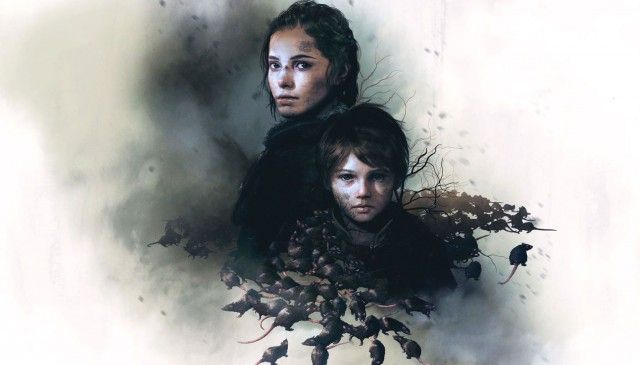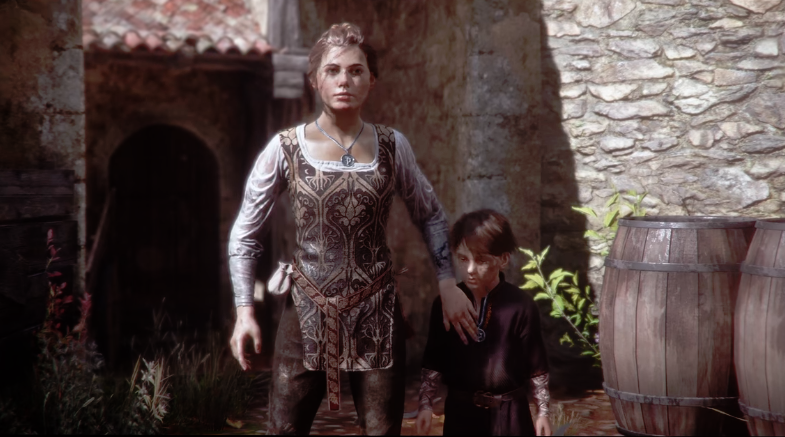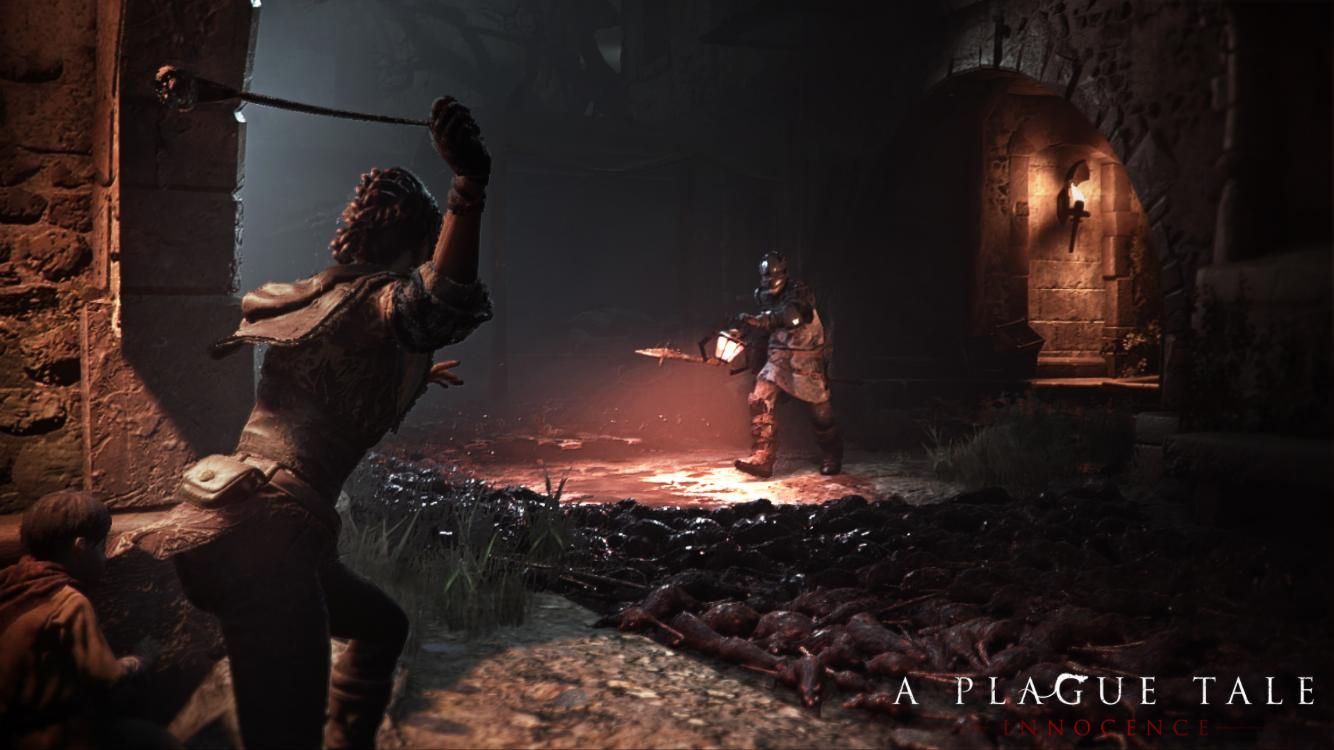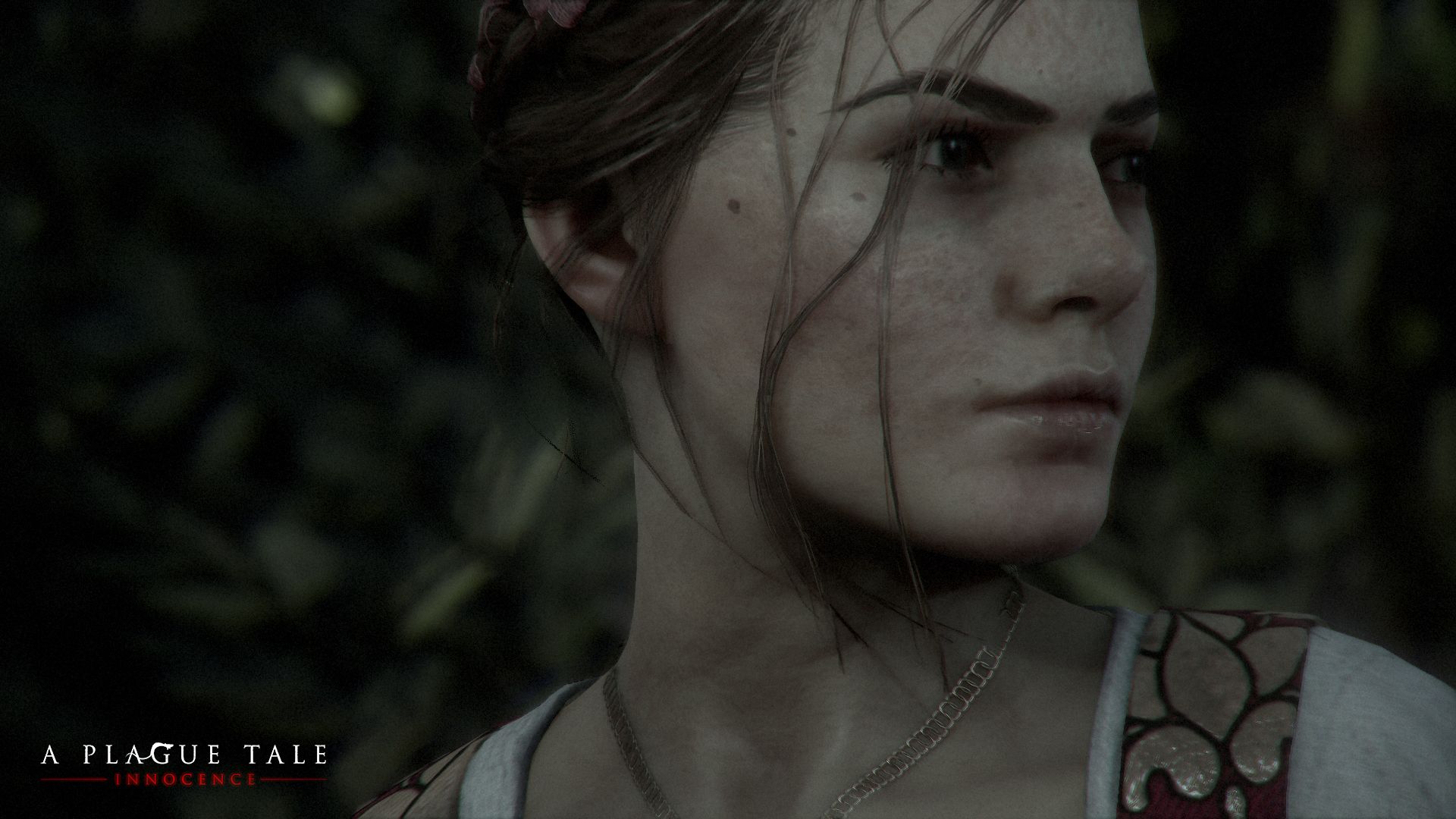As we draw closer to the release of Asobo Studio and Focus Home Interactive’s mesmerizing title A Plague Tale: Innocence on May 14, DualShockers wanted to delve into this dark, emotional-based story that revolves around siblings Amicia and Hugo and ask its game director Kevin Choteau some questions that should give players a more in-depth understanding on the structure of the game.
I have ben intrigued by this game since it was announced, following its recent webseries which explores the game’s development. We have also witnessed some alluring screenshots that showcase the landscapes and environments that surround A Plague Tale: Innocence that include medieval castles, villages, catacombs, wasteland battlefields, and verdant forests. As beautiful the game may seem at first glance, what lays beneath in reality looks to be a world of plague-ridden fear, monstrous rats, the relentless inquisition, and the emotional story of a brother and sister.
In order to get a better idea of what’s in store for eager fans, I talked with Game Director with Kevin Choteau to discuss everything from cut content to how they constructed authentic emotions and why they set the game during the Black Death.
Rachael: Will A Plague Tale: Innocence capture any other notable historical events or movements outside of The Black Plague?
Kevin Choteau: The 14th century is the crossroad of lots of major events in medieval history – the Hundred Years War, where the Plantagenets and Valois fight for the French throne, the inquisition ruling daily life, etc. All this created lots of historical anecdotes that we choose to expose in our adventure.
R: Why did Asobo Studio decide to structure A Plague Tale: Innocence’s story around The Black Death rather than any other tragic period in history?
KC: We structured the story toward our characters first. The Black Death is an opportunity to expose innocent children to one of the most extreme situations humanity had to face. The Plague is a natural force against which nobody can fight. This period is also the underground context of lots of folktales (Hansel and Gretel, the pied piper of Hamelin, and so on)
[pullquote]"We wanted to tell the story of a unique bond, it’s something universal that resonates and everyone can understand."[/pullquote]
R: You've previously stated that The Last of Us is one of your inspirations for A Plague Tale: Innocence. What elements did you implement from that title into your game?
KC: The Last of Us was one of our references in terms of narration and emotions, like Brothers: A Tale of Two Sons or Ico from back in the day. Like those titles, we wanted to tell the story of a unique bond, it’s something universal that resonates and everyone can understand.
R: As siblings, what is the dynamic between Amicia and Hugo like? Did using child actors allow this relationship to feel more realistic?
KC: It’s all about how the relationship evolves through the journey. Amicia barely knows her brother at the beginning of the tale. She will have to learn how to protect Hugo, how to become more than a sister, almost a substitute mother for him. On the other hand, Hugo is 5. He will discover the world and will feel extreme emotions that Amicia will have to manage and understand.
Charlotte and Logan, as well as all the cast, helped us to build authentic emotions. They were really involved in the game creation and made us interesting proposals to evolve the dialogue, making it more spontaneous. They did an amazing job and we were thrilled to work with such talented young people.
R: Will players have to make choices for Amicia and Hugo that will have story consequences throughout gameplay, or are the plot and gameplay linear?
KC: We chose to make a linear narrative experience to concentrate on what we wanted to tell. That said, sometimes the player will be able to choose how to play and this can be “rewarded”. We miss this kind of linear single player adventure game and we thought we could bring something to the genre.
R: Why do the rats in A Plague Tale: Innocence act more blood-thirsty and ferocious than usual and what challenges will their behavior create for players?
KC: The rats bring flesh to the Black Plague, they are the popular imagery of it. Like the disease, the horde kills everything in its path, it incarnates this unstoppable force, which nobody really understands or can deal with. They are central to our gameplay mechanics and the only way to stay safe is to use the lights, which are not that easy to find and keep in the medieval period. Amicia and Hugo are also chased by the Inquisition and staying in the light is not always a good idea when someone is looking for you.
R: As A Plague Tale: Innocence’s landscapes and lighting look great, is Asobo Studio planning to implement a Photo Mode so more enthralling moments can be captured?
KC: Unfortunately, there is nothing planned yet.
[pullquote]"We chose to write a story about young kids that should feel as natural as possible. We failed many times before finding the right tone and mood that strikes true."[/pullquote]
R: What were the biggest obstacles that Asobo Studios had to overcome during A Plague Tale: Innocence’s development?
KC: This first one is technical: having up to 5000 rats on the screen, who must be credible and move as a fluid horde without too much impact on game performance. The second one is more emotional, we chose to write a story about young kids that should feel as natural as possible. We failed many times before finding the right tone and mood that strikes true.
R: Did any story or gameplay elements get cut during development? If so, what were they?
KC: Of course, lots of things were considered or added to the game and we have cut every aspect of the game that was not serving the story. As an example, in our initial vision, we wanted to stay as grounded as possible but at some point, we tried to add some fantastical elements to the game. Suddenly, it wasn't feeling right, it was like betraying our characters.
R: What is the most important aspect or theme of the game that you would want the player to take away with them after they have played A Plague Tale: Innocence?
KC: It’s a tale, you know, so as in all tales, there might be a moral for everyone to find out. We are looking forward to reading what will remain of this story in the player’s comments and feedback. We want the players to share and discuss about their experience.
R: Is there anything else you would like DualShockers audience to know about A Plague Tale: Innocence?
KC: I’m so proud of my 40 teammates, who gave a part of themselves to build this game and I hope the players will feel our dedication in bringing this journey to life.
I honestly can't wait to personally jump in to play this title and experience all the pieces that have been discussed, stitched together in what I'm to be one of my best gaming experiences of 2019. Kevin Choteau has done a great job at hooking me further into the gameplay and dynamics of A Plague Tale: Innocence and I'm excited to experience not only the emotional undertow but also learning about the history that is so cleverly woven into the mechanics of this adventure with Amicia and Hugo.
If you haven’t already watched the 16 minutes of uncut gameplay or Amicia and Hugo surrounded by terrifying rats, my advice is to hop over and allow yourself to be captivated, as well as maybe a little scared. You can also check out our thoughts on the game from E3 2018. A Plague: Tale Innocence will finally be releasing for PC, PS4, and Xbox One on May 14.





